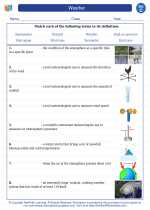Structure of Mitochondria
Mitochondria have a double membrane structure. The outer membrane is smooth while the inner membrane is highly folded, forming structures called cristae. The space inside the inner membrane is known as the mitochondrial matrix. The presence of these membranes allows for compartmentalization of different cellular processes within the organelle.Function of Mitochondria
The primary function of mitochondria is to generate ATP through a process called cellular respiration. This involves the breakdown of sugars and fats to produce energy in the form of ATP. Mitochondria also play a role in regulating cellular metabolism, calcium signaling, and apoptosis (programmed cell death).Mitochondrial DNA
Mitochondria contain their own genetic material in the form of mitochondrial DNA (mtDNA). This DNA encodes for a small number of genes that are essential for the organelle's function. The presence of mtDNA is believed to be a remnant of the evolutionary origin of mitochondria, which are thought to have originated from an endosymbiotic relationship with ancestral prokaryotic cells.Study Guide for Mitochondria
.◂Science Worksheets and Study Guides Third Grade. Weather
Study Guide Weather
Weather  Worksheet/Answer key
Worksheet/Answer key Weather
Weather  Worksheet/Answer key
Worksheet/Answer key Weather
Weather  Worksheet/Answer key
Worksheet/Answer key Weather
Weather  Vocabulary/Answer key
Vocabulary/Answer key Weather
Weather  Vocabulary/Answer key
Vocabulary/Answer key Weather
Weather 

 Worksheet/Answer key
Worksheet/Answer key
 Worksheet/Answer key
Worksheet/Answer key
 Worksheet/Answer key
Worksheet/Answer key
 Vocabulary/Answer key
Vocabulary/Answer key
 Vocabulary/Answer key
Vocabulary/Answer key

The resources above cover the following skills:
EARTH AND SPACE SCIENCE (NGSS)
Earth’s Systems
Students who demonstrate understanding can:
Represent data in tables and graphical displays to describe typical weather conditions expected during a particular season.